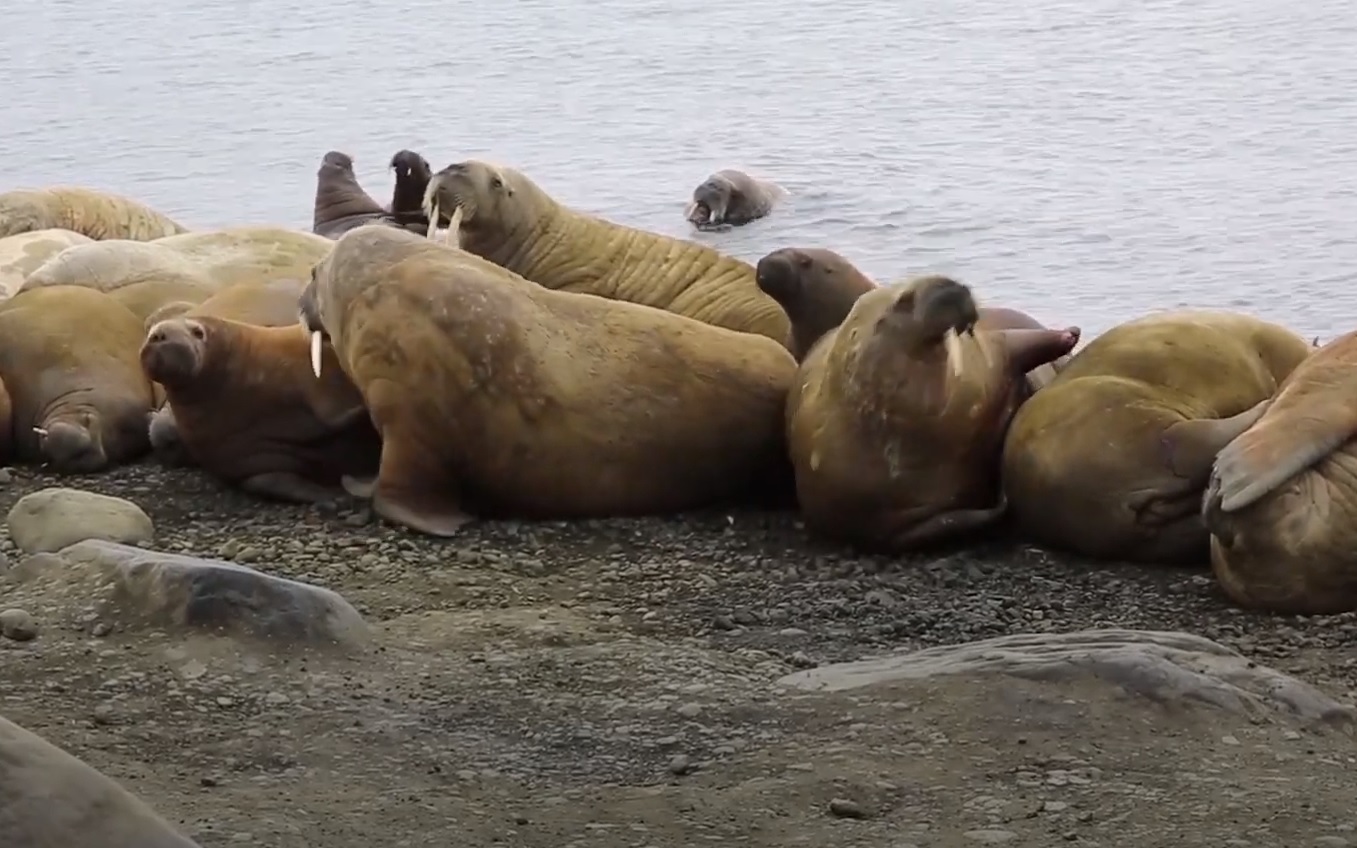
The expedition of the Arctic Scientific Center of the Rosneft Company together with the A.N. Severtsov Institute of Ecology and Evolution of the Russian Academy of Sciences and the Center for Marine Research of Moscow State University returned to Arkhangelsk.
The scientists worked from August to September on the protected archipelagos of Franz Josef Land (North cluster of the Park) and Novaya Zemlya (South cluster of the Park) in order to continue the study of marine mammals living in the Russian Arctic. The tasks of the expedition included clarification of the current state of the species, as well as the introduction of new methods for studying animals in the protected areas.
According to the head of the expedition, leading engineer of the IEE RAS, Svetlana Artemyeva, the work was divided into two thematic sections: the study of the Atlantic subspecies of the walrus and the study of the polar bear.
“To assess the state of the species in protected areas, we surveyed 26 islands of the Franz Josef Land archipelago and the Oranskie Islands of Novaya Zemlya. In preparation for the expedition, our group gathered information about approximately twenty potential locations of large walrus rookeries. Not all locations were confirmed. Thus, we did not find walruses at Cape Ostantsovoy on Hayes Island, although walruses usually lay there; we did not find walruses at Cape Frankfurt on Gall Island or on Adelaide Island. But we managed to find a new burrow on Jackson Island, where our colleagues set up a camera trap to watch the animals,” said Svetlana Artemyeva.
Unmanned aerial vehicles were used for animal counting during the expedition. According to scientists, the Geoscan apparatus performed well, with the help of which it was possible to create 3D models of the islands of the ZFI archipelago, as well as small drones necessary for monitoring the number of walruses and for tracking polar bears.
For the first time in the "Russian Arctic", hydrobiological studies were carried out aimed at studying the nutrition of walruses in rookeries. To maximize the reliability of the information, underwater operations were monitored using special surveillance cameras.
The expedition used the methods of satellite tagging of animals. In the Franz Josef Land archipelago, scientists have installed satellite tags on walruses on the islands of Eva Liv, Jackson, Northbrook and the Dead Seal Island.
A group of biologists led by a senior researcher at IEE RAS Ph.D. Ilya Mordvintsev was able to study six polar bears on Novaya Zemlya. This year, in addition to the traditional blood sampling of animals for genetics and viral diseases, samples were taken for the presence of heavy metals and other pollutants.
“We are working for the third time at Cape Zhelaniya in the South Sector of the Park. It will be interesting to compare the results obtained with the previous ones. Visually, we noted that this time the animals were in a more satisfactory condition than in previous years. Despite the fact that the bears had been on a meager summer diet for three months, which mainly consisted of grass and algae, all the individuals we observed were doing well,” said Ilya Mordvintsev.
The scientists noted that all research methods used in the expedition were minimally invasive and did not stress the animals.
“Scientists track the behavior of walruses and bears after satellite tracking tags are installed on them,” comments Alexander Kirilov, director of the Russian Arctic National Park. “According to experts, after
working with them, all individuals remained in their habitats. We are pleased that animals are not stressed and that they do not move through the protected areas as a result of human intervention."
During the expedition, scientists installed 10 automatic photo recorders to monitor the state of the Atlantic walrus rookeries.
“Combining animal counting using satellite tracking, using unmanned aerial vehicles and studying their food supply can reveal patterns in the distribution of species in protected areas,” says Ivan Mizin, Deputy Director for Scientific Work, Ph.D., “This approach is very relevant: the less we disturb the natural environments, the more we understand the natural processes occurring in them. "
Next year, the expedition of the A.N. Severtsov Institute of Ecology and Evolution of the Russian Academy of Sciences and the Center of Marine Research of Moscow State University on the territory of the Russian Arctic National Park will continue.
